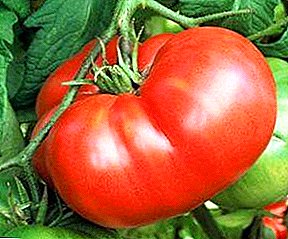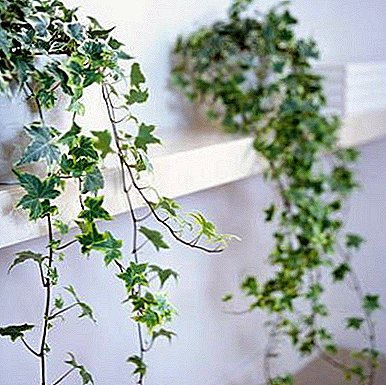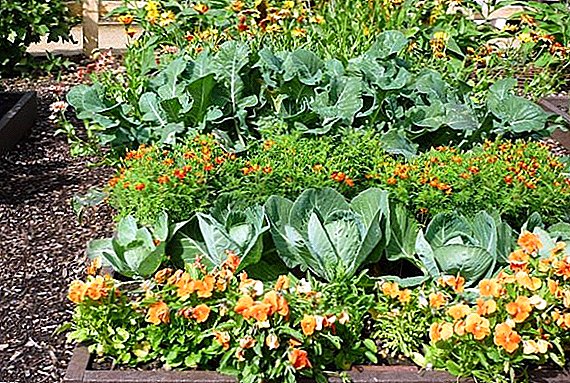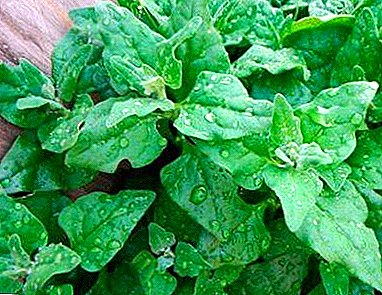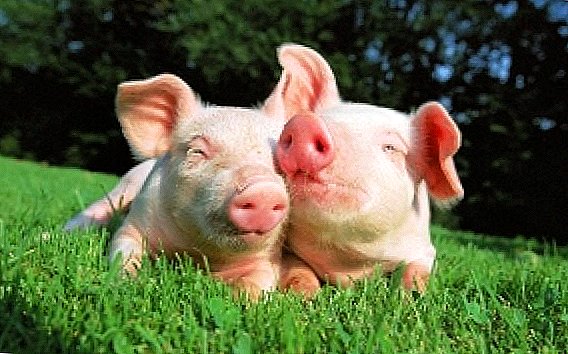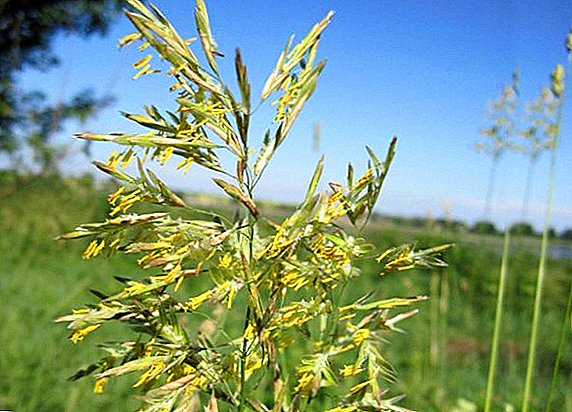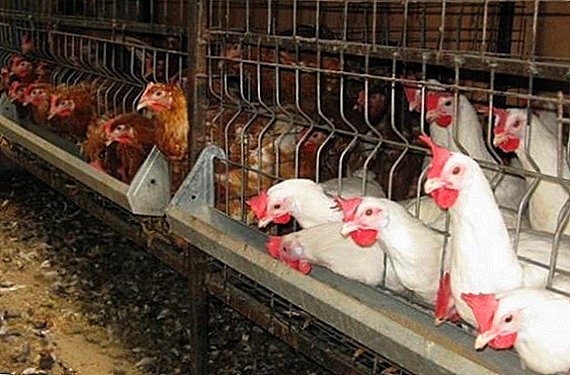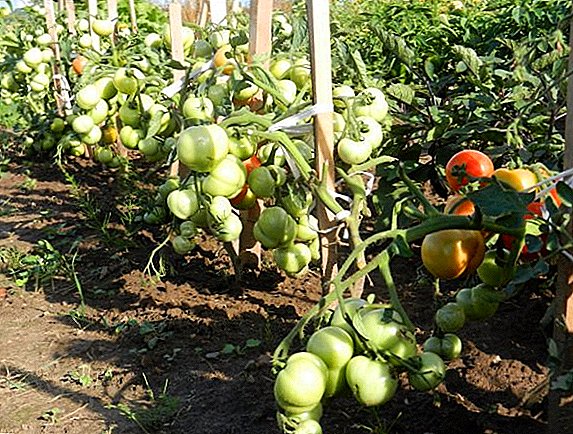 Tomato varieties "Katya" perfectly proved itself among the early maturing varieties of tomato.
Tomato varieties "Katya" perfectly proved itself among the early maturing varieties of tomato.
With its positive qualities, such as resistance to diseases and adverse weather conditions, the tomato variety “Katya” has earned recognition of millions of summer residents.
Even novice gardeners can plant such a tomato, because it does not require any specific care. At the same time, "Kate" is characterized by good yield and taste, and the experience of its cultivation will leave behind only exceptionally pleasant impressions.
 Tomatoes of this variety are suitable for fresh consumption, they can also be used to make juice, tomato paste and preservation.
Tomatoes of this variety are suitable for fresh consumption, they can also be used to make juice, tomato paste and preservation.
Variety "Kate" is a hybrid, which means that it combines the best qualities of several different varieties. Let's take a look at its main characteristics and find out why it is so popular among both experienced gardeners and novice gardeners.
Did you know? Variety "Katya" was bred by breeders in the early 2000s.
Tomato "Katya": yield and characteristic varieties
To discuss the tomato "Kate", namely the characteristics and description of the variety, it is worth starting with the fact that it is a hybrid of F1. F are children (from Italian filli), 1 is the generation number. That is, "Kate" - a hybrid of the first generation.
From the moment of sowing the seeds and until the appearance of ripe and juicy fruits, it takes from 75 to 80 days, therefore, this variety of tomatoes is considered early ripening. It can be grown both in the greenhouse and in the open field.
"Kate" perfectly tolerates heavy rain and drought, and also shows high resistance to such phyto-diseases as top rot, tobacco mosaic virus, late blight and Alternaria. Tomato "Katya" is characterized by a bush height of 60 cm, which is distinguished by its average foliage.
 Speaking about the yield of this tomato, it should be mentioned that when grown in conditions of open ground, 8-10 kg of crop can be harvested from one m² of seedlings. In greenhouse conditions, one m² of seedlings brings up to 15 kg.
Speaking about the yield of this tomato, it should be mentioned that when grown in conditions of open ground, 8-10 kg of crop can be harvested from one m² of seedlings. In greenhouse conditions, one m² of seedlings brings up to 15 kg.
Commercial fruits account for 80-94% of the total yield. This variety of tomatoes is characterized by the formation of simple inflorescences and the presence of joints on the stalks.
Important! Usually the first inflorescence forms over the fifth leaf, and in each brush about 8-9 tomatoes are tied.
The advantages and disadvantages of tomato "Katya"
Among the advantages of tomato "Kate" are the following positive characteristics:
- early maturity;
- unpretentiousness;
- high yield;
- disease resistance;
- excellent taste and commodity qualities of tomatoes;
- uniform ripening of tomatoes, which greatly facilitates harvesting;
- good transportability of tomatoes and their resistance to mechanical damage.
 Also sometimes there are cases of defeat of a plant by fomoz and a tomato mosaic.
Also sometimes there are cases of defeat of a plant by fomoz and a tomato mosaic.
Bordeaux liquid (fomoz) and a 5% potassium permanganate solution (tomato mosaic) are used to treat these diseases.
Features of growing seedlings varieties "Katya"
Tomatoes varieties "Katya" is recommended to be grown using a seedling method, and after the development of cotyledons, it is better to pick the plants. Saplings 15-20 cm high are planted in the open ground.
It is best to disembark during the period when the probability of cold snaps and frosts becomes minimal. Remember that the distance between the holes should be not less than 45 cm, and the holes should be deep enough for the plant to feel comfortable.
Important! To get an early harvest, even in March, the seeds must be sown in containers filled with a nutrient substrate.
Soil requirements
To get a good harvest of tomatoes, you must comply with the requirements for the composition of the soil. So, for better harvest are needed sandy or loamy breathable soil.
 To determine the type of soil on the plot it is enough to take a small handful of earth and wet it with water right in the palm of your hand. After that, mash it up to a state of rare dough and roll it between your palms into a kind of "sausage" with a diameter about a pencil.
To determine the type of soil on the plot it is enough to take a small handful of earth and wet it with water right in the palm of your hand. After that, mash it up to a state of rare dough and roll it between your palms into a kind of "sausage" with a diameter about a pencil.
Now try to roll this "sausage" into a ring - if it is cracked in places of the folds, then this means that the soil belongs to the loam type. If the ring turned out even and without cracks - the earth is clay.
These types of soil are suitable for growing varieties "Katya", but any of them also need the right fertilizer, for which:
- Every 3-4 years it is necessary to add dolomite flour or lime to sour soil (250-600 grams of substance are spent for each m²).
- In a heavy clay soil for each m², add 1.5–2 buckets of rotted (1–2 years old) manure or compost. You can also use one bucket of river sand, previously soaked in urea solution (prepared in a proportion of 150 grams per 10 liters of water).
The timing of planting seeds
Calculate the timing of sowing tomato seeds is not difficult. The variety of tomatoes "Katya" is early ripening, which means that about 100 days pass from the growing season until the first fruits appear.
In order to get the first tomato on the salad by July 20, you need to plant the seeds 100 days before this date. Add to this 7-10 days per shoot, plus 3-5 days to adapt the planted seedlings to the soil. Based on this, planting seeds should be carried out in early April.
Seed preparation and planting scheme
 The description of the tomato "Kate", as well as their characteristics, include such an important point as seed preparation to their subsequent landing.
The description of the tomato "Kate", as well as their characteristics, include such an important point as seed preparation to their subsequent landing.
In particular, it is recommended to disinfect seed before planting in a simple and proven way: fill the seeds with a weak pink solution of potassium permanganate (1 gram of potassium permanganate is diluted in 100 milliliters of boiled water) and leave them for 15 to 20 minutes. Such a manipulation helps to protect the seeds from various bacterial diseases.
Also, before sowing, you can soak the planting material in the melt water. To prepare it, take a tight plastic bag and fill it with 3/4 of water. Drain excess fluid after more than half of the water has frozen. Together with the merged water, harmful impurities will also be removed. After defrosting the ice, you will receive biologically active water, which, within 2–3 days, has the ability to stimulate germinating seeds.
Planting in open ground can be carried out using a variety of techniques and schemes. The undoubted advantage is that even beginners can successfully plant tomatoes, for which it is easiest to use the classical planting scheme: 70x30 cm with a formation of 2-3 stalks, planting density with this scheme is 3-4 plants per m².
How to care for seedlings "Kati"
 Tomatoes "Kate" and a description of their care, perhaps, should be started with seedling containers. Such pots should have special holes at the bottom to drain excess liquid. In their absence, the plant will be susceptible to a disease such as blackleg.
Tomatoes "Kate" and a description of their care, perhaps, should be started with seedling containers. Such pots should have special holes at the bottom to drain excess liquid. In their absence, the plant will be susceptible to a disease such as blackleg.
Suitable for sowing seedlings any universal sowing substrate or compost from a mixture of peat and sand, taken in equal parts. You should not sow tomato seeds too thickly, as you risk getting thin and weak seedlings.
Substrate should be well moistened before sowing. The seeds themselves need to be heated, since it contributes to decontamination and significantly improves sowing qualities. To warm the seeds, ensure the change of temperature regimes: warm up 48 hours at a temperature of about +30 ° C, and then another 72 hours at a temperature of +50 ° C. After sowing and until the first shoots appear, maintain a temperature not higher than +23 ° C.
After the appearance of the first shoots, remove the film from the seedling containers, and in order not to expose the very weak seedlings to excessive evaporation, perform this procedure in the afternoon. Water the seedlings with a finely sprayed stream and remember that plants should not be heavily flooded with water.
Pickling seedlings in open ground
Pick picking is the process of transplanting young shoots from a tank for sowing seeds into a large container filled with soil mixture. Picking is a responsible process that strengthens the root system of young seedlings. Usually the pickling of the seedlings is carried out 20 days after the first shoots.  So, with the appearance of two leaflets in sprouts, they can be safely seated, but only about an hour before this, water the plants well. Carefully shake the contents of the planting container onto the table, use the pointed end wand and carefully divide the plants with it.
So, with the appearance of two leaflets in sprouts, they can be safely seated, but only about an hour before this, water the plants well. Carefully shake the contents of the planting container onto the table, use the pointed end wand and carefully divide the plants with it.
Hold the seedlings behind the cotyledons and gradually divide the roots, making sure that during the procedure they are not left without land. Plant the plants in separate containers or cells. Make such holes so that the seedlings fit freely in them.
After that, slightly tamp the soil and pour it. If the seedlings are very small or too fragile, then it is better not to water the containers with plants, but to put them in a pan with water, and spray the above-ground part using a spray bottle.
Terms of planting seedlings varieties "Katya" in open ground
 Tomatoes are a very thermophilic plant, and "Kate" is a super-ripe tomato, ripening quickly enough, therefore the time of planting of seedlings in open ground depends on atmospheric phenomena and temperature conditions.
Tomatoes are a very thermophilic plant, and "Kate" is a super-ripe tomato, ripening quickly enough, therefore the time of planting of seedlings in open ground depends on atmospheric phenomena and temperature conditions.
That is, as soon as the soil warms up a little, and the night frosts are over, the seedlings can be planted safely in the soil. May is usually suitable for this, but the best time is the second half of May or the first half of June.
Did you know? Tomatoes grow better at night
Process technology
Before you start planting tomatoes, you need to make holes to the size of the seedlings and carefully water them (approximately one liter for each well). Also, be sure to ensure that the seedlings did not wither, because even slightly wilted plants do not root, get sick and grow slowly.
As already mentioned, "Kate" is an ultra-early tomato, therefore when describing the variety and the process of planting it is necessary to mention the fact that the seedlings should be planted slightly deeper than it grew in the container.
Experienced gardeners recommend removing several lower leaves of the plant and deepening the seedlings as much as possible during planting. The seedling can be buried up to half of the stem, slightly tilting it to the north-west.
 Carefully crimp the roots of the seedlings and bend them in such a way that the ends of the roots are directed straight to the bottom of the hole.
Carefully crimp the roots of the seedlings and bend them in such a way that the ends of the roots are directed straight to the bottom of the hole.
After the seedlings are planted, water the plants, and gently sprinkle the hole itself on top of a layer of dry soil.
How to care for tomatoes varieties "Katya"
Describing the features of growing tomato "Kate" it should be noted that its planting is only the first stage on the road to success, and the second one also provides for thorough care of the plant. This variety needs hilling, regular watering and loosening of the soil, as well as the introduction of top dressing. The correct formation of a bush and timely pest and disease control are very important.
The soil between the rows should constantly break through, and the optimal period - every 10-12 days, but at least three times during the summer period. Try to avoid crust formation when loosening. If your garden area consists of heavy soils, then deep loosening should be carried out in the first 10-15 days after transplanting.
The first hilling need to spend 9-11 days after transplanting. Water the tomatoes before the procedure, since hilling with wet soil will significantly accelerate the formation of new roots. The second time the procedure is carried out 16-20 days after the first.
Watering and feeding
As already mentioned, tomatoes "Katya" are ultra-early varieties, which means that they need early and timely watering. So for watering holes, 0.7-0.9 liters of water per plant is required. The best time to add fluids is in the afternoon when the sun is not so bright. Also, be sure to water the tomatoes during the flowering period of the first and second brushes, as well as before loosening the soil and after making dry mineral fertilizers.
 The first feeding is carried out 10-12 days after planting, for which it is used a mixture of organic and mineral fertilizers. So, in a 10 liter bucket of mullein solution (one part mullein or slurry and 8-9 parts of water) add 20 grams of superphosphate.
The first feeding is carried out 10-12 days after planting, for which it is used a mixture of organic and mineral fertilizers. So, in a 10 liter bucket of mullein solution (one part mullein or slurry and 8-9 parts of water) add 20 grams of superphosphate.
One bucket of this nutrient solution allows you to process 10 plants at once. The second and third feeding (with an interval of 2 weeks) is made by dry mineral fertilizers either under hilling, or immediately after loosening. For 1 m² of the site you need to make 20 grams of superphosphate, 10 grams of ammonium nitrate and 15 grams of potassium salt.
Important! Be sure to monitor the level of moisture, which will help avoid overwetting the soil and protect plants from cracking fruits and their subsequent rotting.
Masking a plant
Masking - The necessary procedure, which consists in removing excess shoots from plants. If you do not stop the growth of the stem, cutting off its extra shoots, the plant will spend all the nutrients on the growth of the vegetative mass, and not on the development of fruits.
It is recommended to conduct pinching in the morning, so that the plant can heal all the wounds before night. First of all, the lower stepsons are removed, which are cut off with scissors or a knife. To find them is quite simple, because it is a lateral shoot that grows from the sinuses of the leaves.
In order to grow a tomato bush in one stem, you must remove all stepchildren. When forming in 2 stalks it is necessary to leave the main shoot and the strongest extra.
 It is not recommended to grow more than three stems in one bush.
It is not recommended to grow more than three stems in one bush.
Also, do not allow the extra shoot to overgrow too much. Inspect the plant for staining is better once a week.
Soil care
Soil care involves periodic weed removal and mulching. All this contributes to the growth of the root system, enhancing growth, strengthening the plant and increasing yields.
The best types of mulch for tomato varieties "Katya" are:
- rotted straw-dung mixture;
- leaf humus;
- straw;
- compost.
 Tomatoes must be protected from weeds constantly, starting from the moment of planting. Do not let the weeds grow.
Tomatoes must be protected from weeds constantly, starting from the moment of planting. Do not let the weeds grow.
In order to prevent this, conduct regular loosening and hilling, as well as mechanical removal of weeds.
Did you know? Currently, there are 10,000 varieties of tomatoes, the smallest of which reaches no more than 2 cm in diameter, while the largest weighs about 1.5 kg.
Harvesting tomato varieties "Katya"
Tomato "Kate" and its yield - a reason for the pride of every gardener, because this variety is able to bring a lot of juicy tomatoes.
The term of their harvesting depends on what exactly you will use tomatoes:
- To prepare salads and other dishes, collect fully ripened fruits. They can be determined by the characteristic for this sort of flat-rounded shape and bright red color.
- For the preservation of suitable pink and yellowed fruit.
- For long-term storage, it is better to select tomatoes in the so-called "milky ripeness", when the bright green color of the fruit changes to a pale green, almost white.
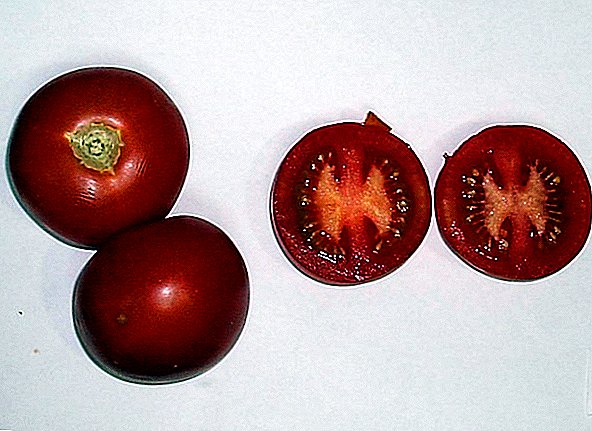
However, remember that the entire crop of tomatoes must be harvested before the air temperature drops to +13 ° С. Otherwise, the fruit will turn black and become unsuitable for human consumption.
"Kate" is a wonderful variety of tomatoes, which can be grown not only by experienced gardeners, but also by beginning gardeners, and the taste of its bright and juicy fruits will not leave indifferent even the most fastidious gourmet.


